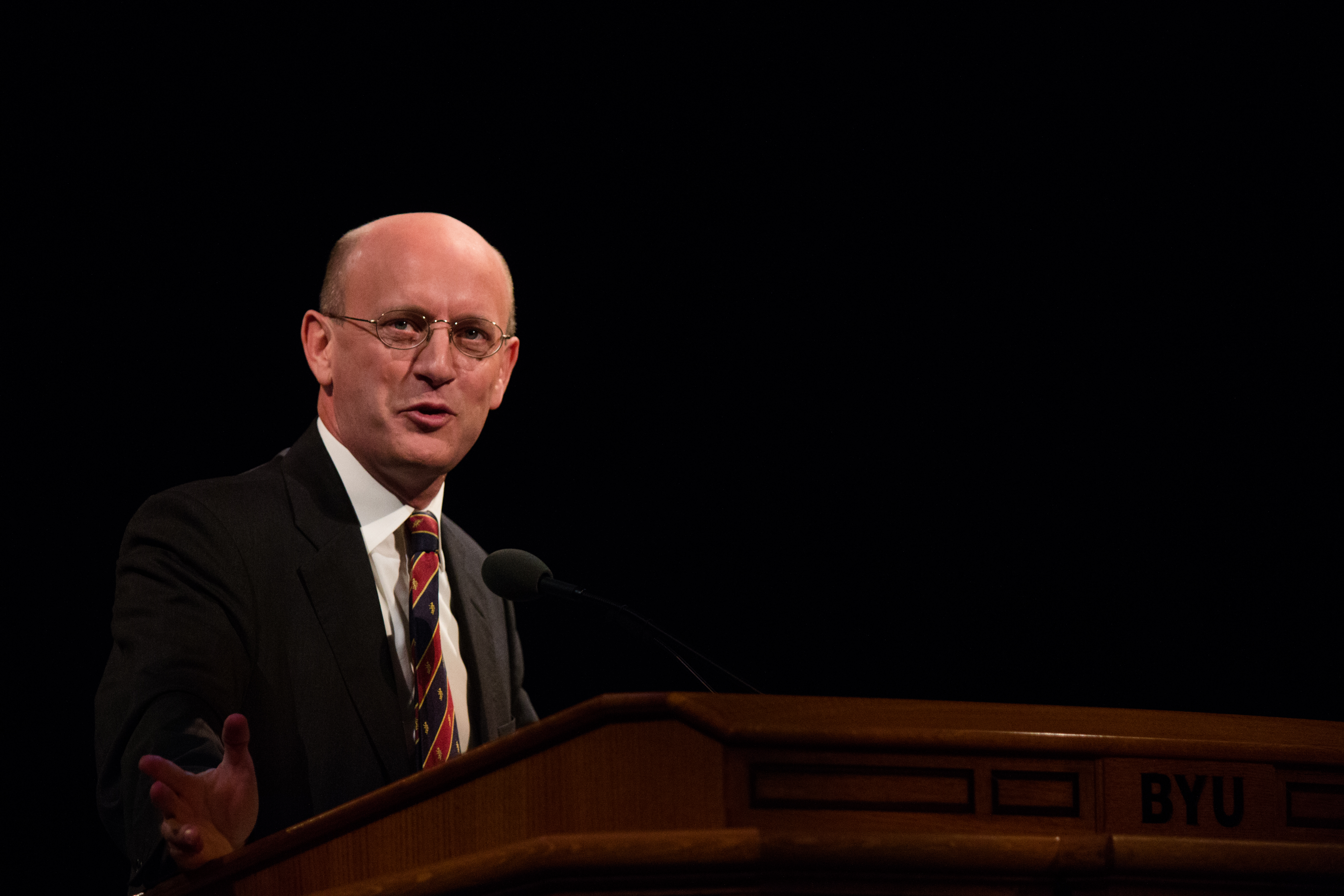
Oxford University senior research fellow Michael Ward addressed BYU in a forum address about unlocking the mysteries of C.S. Lewis’s The Chronicles of Narnia.
The Sept. 26 address is entitled “The Heavens Are Telling the Glory of God: C.S. Lewis, Narnia, and Medieval Cosmology.” Ward discussed his research of Lewis’s Narnia world and the clues Lewis left in his works to suggest the Narnia Chronicles are a complex manifestation of the seven known planets of Medieval cosmology.
Ward said The Chronicles of Narnia series is still selling in the millions in 140 different languages and that the movie adaptations of the first three assisted in the continued popularity of the series.
According to Ward, “The Lion, Witch, and the Wardrobe” was read by C.S. Lewis’s good friend, JRR Tolkien. Tolkien said the story was a hodgepodge and didn’t understand why English children interacted with centaurs from Roman/Greek mythology, a witch out of a Hans Andersen fairytale, and Father Christmas.
Ward theorized the reason behind Tolkien’s criticism is that his worlds were precise and complete with languages and appendices for the lore of the worlds and created with imaginative logic, whereas Lewis’s Narnia series were “a bit casual.”
Ward said Tolkien’s view on the books are very well known, and that Tolkien gave up trying to read them altogether. Ward added that Tolkien’s opinion of the books was, “entirely out of his range of imaginative sympathy,” a nice way of saying he didn’t like them.
Ward said if Lewis did not have imaginative logic, it would not make sense in light of his nature. “Lewis loved intricacies and complexities,” Ward said.
According to Ward, Lewis’s imaginative logic is easy to see because of his love of complex poetry and complex medieval literature, and his beliefs about God — there is too much cognitive dissonance to claim Lewis wasn’t methodical in his writing of the Narnia series.
Ward added that scholars believed there had to be more pattern and thought in Lewis’s Narnia Chronicles.
“The obvious place to look is the biblical parallels within the series because Lewis said the whole Narnia series is about Christ,” Ward said.
Ward clarified that Aslan, the only character to appear in all seven books, is the Christ figure and very Christlike; anywhere from creation to crucifixion to judgement, Christ was a part of all of the stories. Ward agreed the biblical parallels are there, but there is more to it.
Ward said three of the stories in the series fit into the scope of Christ, but the other four were lacking evidence to support the Christ claim.
“There must be some sort of creative intent,” Ward said.
Ward and other scholars have discussed the seven things this series could represent, including the possibility of the seven deadly sins, the seven sacraments, and other seven item symbolisms. Ward said he couldn’t fit all of the books into one symbolic structure.
“There is a secret, imaginative blueprint for each of the Narnia Chronicles,” Ward said, also something that fits with Lewis’s character.
Ward quoted George Sayer who said, “Jack (Lewis’s nickname) never ceased to be secretive.”
While it is easy to think of the Christ character, Aslan, to be like Christ and doing Christlike things, Ward said Christ has to be looked at as the pervasive and omnipresent.
“God is closer to us than we are to ourselves,” Ward said. “In other words, we know God more than anything else.”
Ward said Lewis used cosmology of the planets or seven heavens (sun, moon, Jupiter, Saturn, Mars, Mercury, and Venus), later known as the the seven days of the week, to depict this omnipresent Christ. Every book in the Narnia series cued in on one planet at a time in the Narnia Chronicles, according to Ward.
Ward said Lewis’s first book in The Chronicles of Narnia “The Lion, the Witch, and the Wardrobe” represents Jupiter, with it’s implicit reference to Christ through the symbolism of forgiveness in Edmund. Ward then listed the rest of the books in the series, together with their planet counterpart.
Ward gave a final piece of evidence for his theory by quoting Lewis, who said, “Characters of the planets seem to me to have a permanent bound of spiritual symbolism which is especially worthwhile in our own generation.”
To learn more on the world of Narnia, see Ward’s work “Planet Narnia: The Seven Heavens in the Imagination of C.S. Lewis.”




